 |

 |
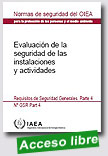 |
Evaluación de la seguridad de las instalaciones y actividades
OIEA Colección de normas de seguridad, 2010, 63 p.
El objetivo de la presente publicación de Requisitos de Seguridad es establecer los requisitos de aplicación general que deberán cumplirse en la evaluación de la seguridad de las instalaciones y actividades, prestándose especial atención a la defensa en profundidad, los análisis cuantitativos y la aplicación de un enfoque diferenciado de las gamas de instalaciones
y actividades abarcadas. La publicación aborda igualmente la verificación independiente que deben realizar los iniciadores y
|
usuarios de la evaluación de la seguridad. Tiene por objeto proporcionar una base sistemática y coherente para la evaluación de la seguridad de todas las instalaciones y actividades, lo que facilitará la transferencia de buenas prácticas entre las organizaciones que efectúan las evaluaciones de la seguridad y ayudará a aumentar la confianza de todas las partes interesadas en que se ha logrado un nivel adecuado de seguridad de las instalaciones y actividades.
Extraído de:
http://www-pub.iaea.org/MTCD/publications/PDF/Pub1375s_web.pdf
|
 |
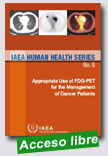 |
Appropriate Use of FDG-PET for the Management of Cancer Patients
IAEA Human Health Series, 2010, 94 p.
The use of PET (positron emission tomography) has become the standard quality of care for optimal management of patients with cancer. The availability of the hybrid PET/CT (positron emission tomography/computed tomography) scanner has further improved the utility of PET scanning and provides additional benefits to both patients and to the health system. This publication addresses the important issue of
|
appropriateness of the application of PET/CT procedures in different clinical scenarios of many cancers. It is a useful resource for specialists in nuclear medicine and oncology, and aims to make reliable information widely available to those Member States where PET programmes are still in their planning phase or where the use of PET scanning is limited.
Extraído de:
http://www-pub.iaea.org/MTCD/publications/PubDetails.asp?pubId=8367
|
 |
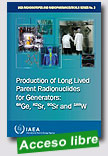 |
Production of Long Lived Parent Radionuclides for Generators: 68Ge, 82Sr, 90Sr and 188W
IAEA Radioisotopes and Radiopharmaceuticals Series, 2020, 116 p.
This book provides information on the production and processing of four important long lived parent radionuclides, 68Ge, 82Sr, 90Sr and 188W, used for the preparation of generators for nuclear medicine applications such as positron emission tomography and therapy. It includes descriptions of the production routes for and process chemistry of the selected
|
parent radionuclides, including relevant separation approaches. Information on use of the generator system and on physical and chemical characteristics is also provided.
Extraído de:
http://www-pub.iaea.org/mtcd/publications/PubDetails.asp?pubId=8268
|
 |
 |
The establishment of a PET (positron emission tomography) facility constitutes a large commitment in terms of initial capital and infrastructure development and support, especially in developing countries, where PET and CT (computed tomography) are in limited use or absent. The emergence of a hybrid system, such as PET/CT has stimulated much interest among clinicians as it provides additional information which is
|
essential for the management of many cancers. This publication is intended to assist health care administrators and clinicians in their efforts to plan and establish a new clinical PET facility. It covers the role of PET and the emerging hybrid technology PET/CT which provides additional information for successful cancer management as well as local high priority health issues. It also provides comprehensive information for the establishment of medically oriented cyclotron facilities for the production of PET tracers and of radiopharmacies, all central to the delivery of PET services. Cost-effectiveness of PET and strategies for useful decision-making with regard to implementation of PET procedures in clinical practice are also covered.
Extraído de:
http://www-pub.iaea.org/mtcd/publications/PubDetails.asp?pubId=8368 |
 |
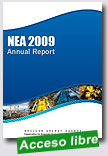 |
NEA Annual Report 2009
Nuclear Energy Agency (NEA - OCDE), 2010, 52 p.
At the end of 2009, a total of 343 reactors were connected to the grid in OECD countries, constituting about 83% of the world’s total nuclear electricity generating capacity
and about 22% of the total electricity supply in the OECD area. During 2009, one new reactor was connected to OECD country grids (Tomari-3, Japan) and three were shut down (Hamaoka-1 and 2, Japan and Phenix, France); construction was initiated (first concrete poured) on one reactor (Shin-Kori-4, Republic of Korea).
|
Although nuclear energy policies can vary widely in OECD countries, ranging from phase-out policies to clear commitments to maintain nuclear power as a significant component of the energy mix, the gap is narrowing, as governments in Germany and Sweden, among others mentioned below, are actively reconsidering such restrictions. This is largely due to an increased recognition of nuclear power’s ability to enhance security of energy supply and
to provide competitively priced, baseload electricity that is essentially free of greenhouse gas emissions and supported by the safe operation of the existing fleet of power reactors.
Extraído de:
http://www.nea.fr/pub/activities/ar2009/AR2009-EN.pdf
|
 |
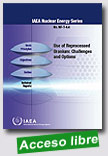 |
Use of Reprocessed Uranium: Challenges and Options
IAEA Nuclear Energy Series, 2010, 66 p.
The issue of recycling and reuse of valuable fuel material is important in the context of sustainable growth of nuclear energy. Recognizing the importance of this subject, this publication reviews and summarizes the information on the management of reprocessed uranium (RepU). It covers technical and economic issues involved in storing, handling and reusing RepU for nuclear energy generation. Hence, it will be of significance to many Member States and will serve as practical handbook for
|
nuclear power plant operators and those corporations interested in providing services related to RepU.
Extraído de:
http://www-pub.iaea.org/MTCD/publications/PubDetails.asp?pubId=8312
|
 |
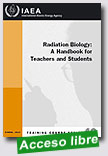
|
Radiation Biology: A Handbook for Teachers and Students
IAEA Training Course Series, 2010, 166 p.
This handbook for teachers and students was formulated based on the recommendations of a Consultants Meeting on International Syllabus for Radiobiology Teaching held 12-14 December 2005 in Vienna, Austria. Whilst this information is available in various books and other reports, it is summarized and collated here so that the whole document has a degree of completeness. This should be helpful in particular to those countries that do not have easy access to appropriate books and reports. Comments and suggestions on this syllabus as ateaching tool were sought from committees of the ESTRO and ASTRO (American Society for Therapeutic Radiology and Oncology).
|
Extraído de:
http://www-pub.iaea.org/MTCD/publications/PDF/TCS-42_web.pdf
|
 |
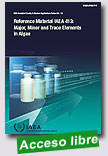 |
Reference Material IAEA 413: Major, Minor and Trace Elements in Algae
IAEA Analytical Quality in Nuclear Applications Series, 2010, 46 p.
A reliable determination of toxic elements in environmental samples plays a vital role in the
assessment of environmental pollution. Appropriate assessment depends on the careful selection of representative samples that truly reflect pollution levels. Biomonitors, such as lichen and algae, are examples of environmental samples that have been widely used by the scientific community to monitor
|
environmental pollution. The second pillar supporting reliability of environmental measurements is the availability of appropriate reference materials for analytical quality control and method validation. Besides IAEA-392, IAEA 413 is another algal material prepared for this aim.
Extraído de:
http://www-pub.iaea.org/MTCD/publications/PDF/IAEA-AQ-14_web.pdf
|
 |
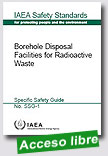 |
Borehole Disposal Facilities for Radioactive Waste - Safety Guide
IAEA Safety Standards Series, 2009, 118 p.
The objective of this Safety Guide is to provide guidance on the design, construction, operation and closure of borehole disposal facilities for the disposal of radioactive waste in accordance with the relevant safety requirements. The guidance can also be used as a basis for reassessing the safety of existing facilities. Compliance with the safety requirements should provide protection for people and the environment from exposure to ionizing radiation. The safety objectives and associated criteria
|
for borehole disposal are no less stringent than for geological disposal or near surface disposal. However, because of the relatively small quantities (in terms of both volume and activity) of waste, considerably less effort would be required to meet these objectives and the associated criteria — and to demonstrate that they will be or have been met — than would be the case for the larger scale practices.
As a practice, the disposal of radioactive waste in borehole disposal facilities falls between the two well-established options of disposal in near surface facilities and disposal in geological facilities. This Safety Guide, therefore, complements both the Safety Guide on near surface disposal and the Safety Guide on geological disposal.
The Safety Guide is intended to support a practical and systematic approach to decision making for borehole disposal such as would be required within the framework of a management system providing for the necessary level of quality.
Extraído de:
http://www-pub.iaea.org/MTCD/publications/PDF/Pub1418_web.pdf
|
 |
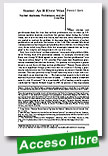 |
Same As It Ever Was: Nuclear Alarmism, Proliferation, and the Cold War
International Security (Belfer Center), volume 34, issue 3, Winter 2009/10, p. 7-37
A widely held and largely unchallenged view among many scholars and policymakers is that nuclear proliferation is the gravest threat facing the United States today, that it is more dangerous than ever, and that few meaningful lessons can be drawn from the nuclear history of a supposed simpler and more predictable period, the Cold War. This view, labeled "nuclear |
alarmism," is based on four myths about the history of the nuclear age. First, today's nuclear threats are new and more dangerous than those of the past. Second, unlike today, nuclear weapons stabilized international politics during the Cold War, when in fact the record was mixed. The third myth conflates the history of the nuclear arms race with the geopolitical and ideological competition between the Soviet Union and the United States, creating an oversimplified and misguided portrayal of the Cold War. The final myth is that the Cold War bipolar military rivalry was the only force driving nuclear proliferation. A better understanding of this history, and, in particular, of how and why the international community escaped calamity during a far more dangerous time against ruthless and powerful adversaries, can produce more effective U.S. policies than those proposed by the nuclear alarmists.
Extraído de:
http://belfercenter.ksg.harvard.edu/publication/19881/same_as_it_ever_was.html
|
|
|
|
|
|
| |
|
|
